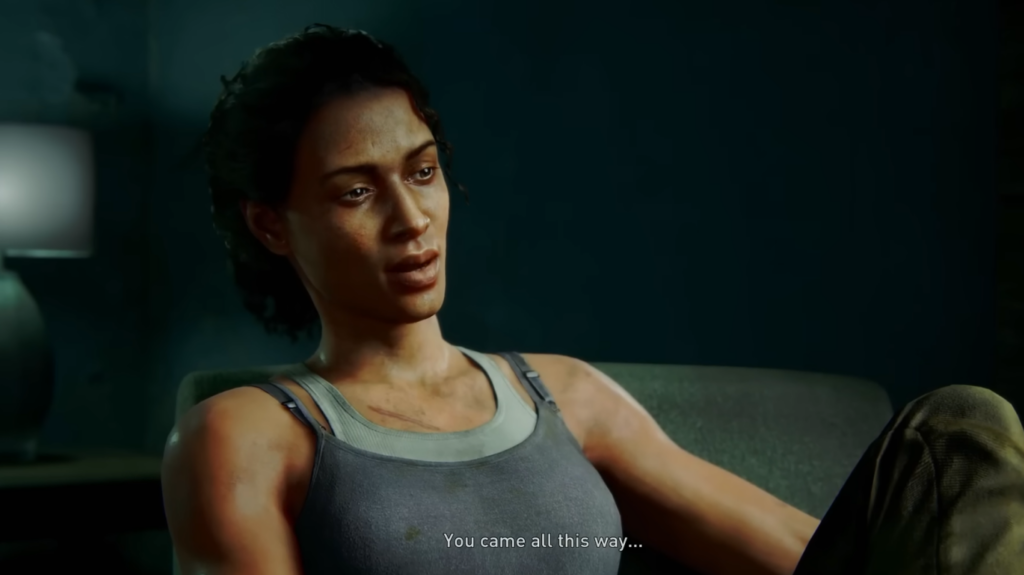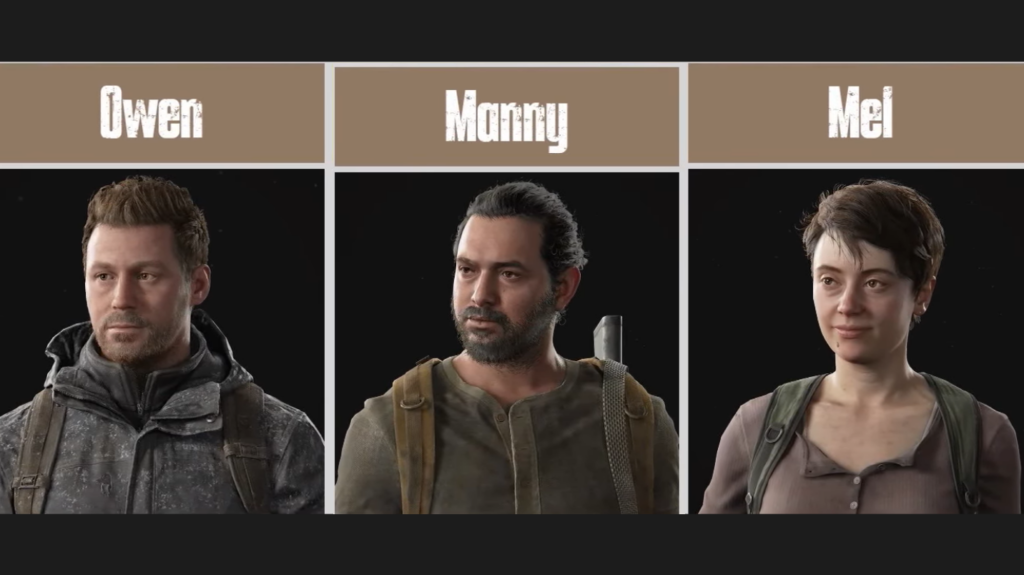Who Are the Fireflies in The Last of Us: Inside the Group That Changed Everything

If you’ve ever wondered who are the Fireflies in The Last of Us, you’re not alone. As a long‑time fan of the games and the HBO series, I’ve had countless conversations about this mysterious militia group and what they actually stand for.
In the post‑apocalyptic world of The Last of Us, there are many factions, but few evoke as much debate among players and viewers as the Fireflies. Are they freedom fighters? Terrorists? Scientists searching for a cure?
In this guide, I’ll share what I’ve learned through playing the original game, its sequel, the second game, reading the American Dreams comics, and watching the first season of the TV series.
Jump to:
Who Are the Fireflies in The Last of Us? Breaking Down the Militia Group
The Fireflies are a revolutionary militia group that forms after the Cordyceps infection collapses society. They appear in both the original game, its sequel, and eventually in the HBO adaptation. According to the game’s lore, the Fireflies are spread across several cities and quarantine zones in America, and their stated goal is to restore the US government and end the harsh rule of FEDRA.
FEDRA (the Federal Disaster Response Agency) imposes strict martial law in quarantine zones; ration cards are scarce, food shortages are common, and anyone suspected of infection is executed. It’s not surprising that survivors like Joel Miller, Ellie, and other characters cross paths with the Fireflies.
From the outset, the Fireflies market themselves as a beacon of hope. They spray‑paint the slogan “When you’re lost in the darkness, look for the light” on walls and distribute pendants to real members. Wearing those pendants is one way to identify genuine members amid spies and impostors. Their headquarters move as they battle FEDRA forces.
Early on, they operate out of the University of Eastern Colorado, but infected attacks force them to relocate to St. Mary’s Hospital in Salt Lake City. It’s here that their most controversial plan unfolds – an attempt to develop a cure from Ellie’s immunity.
Origins and Ideology of the Fireflies
The Fireflies formed in the 2010s after the Cordyceps outbreak and FEDRA’s military coup. Their founders believed the US government had been dissolved and wanted to re‑establish democracy. In the HBO series, showrunner Craig Mazin and game director Neil Druckmann reveal that Marlene created the Boston cell in response to FEDRA’s rise to power. As both the game and the first season show, the Fireflies’ earliest recruits were ordinary civilians drawn to the promise of a light in the darkness. Two of the most notable early recruits were Riley, Ellie’s best friend, and Joel’s brother Tommy, who helped carry out bombing attacks against FEDRA in Denver.
Despite their noble rhetoric, the Fireflies often blur the line between freedom fighters and terrorists. Fedra portrays them as insurgents, and even the press coverage notes that some Firefly cells deposed FEDRA only to watch their cities collapse into anarchy. In Part II, characters like Abby and Owen recall how the group recruited teenagers, tortured soldiers, and blew up checkpoints, killing both soldiers and civilians. As I made my way through the original game and its sequel, I felt torn: was the Fireflies’ willingness to fight justified or were they becoming what they sought to destroy?
Those blurred lines are why players still debate the Fireflies’ ideology. They claim to search for a cure to the Cordyceps fungus and fund scientists in hopes of eradicating the infection. Yet they also engage in bombings and smuggling operations. In one memorable mission, Joel and Tess agree to smuggle Ellie to the Capitol building in Boston in exchange for a car battery. Their journey exposes the Fireflies’ fragility: by the time the group reaches the outskirts of Salt Lake City, there are few surviving Fireflies left.
As a studio, Naughty Dog intentionally portrays this tension. Creative director Neil Druckmann and showrunner Craig Mazin have both said they want players and viewers to question whether the Fireflies are freedom fighters or simply another authoritarian force. In interviews, Craig Mazin has noted that his goal for the television show is to emphasize this moral uncertainty while staying true to the game’s narrative. These insights enrich the portrayal of the militia on screen and in the video game, illustrating how the group’s ideology evolves across seasons.
To dig deeper into these early days, I recommend browsing our article on the best PS5 zombie games. In that guide, we discuss why The Last of Us stands out among zombie games and highlight the stealth and survival mechanics that make the Fireflies’ world feel so lived‑in.
Key Members and Characters
Understanding the Fireflies means understanding the people behind the militia. Their leader is Marlene, a character portrayed by Merle Dandridge in both the game and the HBO series. Joel even nicknames her “Queen Firefly”. Marlene has known Ellie since birth; she promised Ellie’s mother Anna that she would protect the child. Her leadership keeps the Boston cell together, but her decisions (especially the choice to sacrifice Ellie for a vaccine) spark controversy.

Joel Miller and Tess intersect with the group not as members but as smugglers. They initially see the Fireflies as a nuisance, yet Marlene convinces them to escort Ellie because she believes Ellie’s immunity could save humanity. Joel resents the Fireflies for recruiting his brother Tommy. As the story unfolds, he ultimately chooses Ellie over the Fireflies’ plan, leading to the infamous Joel’s massacre at St. Mary’s Hospital.
Other notable members include Kim Tembo, Owen, Nora, Mel, Manny, and Riley – a friend to Ellie who joins the Fireflies and builds bombs for them. In the American Dreams comics, Riley persuades Ellie to explore an abandoned supermarket, and they encounter a firefight between Fireflies and military troops. That encounter hints at the Fireflies’ willingness to recruit vulnerable teens.

In the second game, we meet Abby Anderson, the daughter of Firefly surgeon Jerry Anderson. Abby is a former Firefly who joins the Washington Liberation Front (WLF) after Joel kills her father. Along with comrades like Lev, she embodies the surviving members’ anger and grief. Abby’s story is a huge part of the sequel; she hunts down Joel to avenge the death of her father, illustrating the far‑reaching consequences of the Fireflies’ plan.
Joel’s brother Tommy left the Fireflies after witnessing how they tortured captives and killed people. His departure underscores the internal conflicts that plagued the militia. Many former Fireflies share his regret over the soldiers and civilians they killed during the fight against FEDRA. That guilt fuels later confrontations in the sequel as characters struggle to reconcile past choices with a desire for peace.
For more on character‑driven narratives, you can read our overview of the best story games. We mention how the story in The Last of Us series expertly balances character development with tense gameplay, making you care about survivors on all sides.
The Fireflies’ Plan and Ethical Dilemmas
The Fireflies’ most controversial decision is their attempt to extract a vaccine from Ellie’s brain. After years of failed research, they relocated their lab to St. Mary’s Hospital in Salt Lake City. Scientists at the University of Eastern Colorado had seen some minor success in 2028, but their trials went nowhere. When Marlene learns that Ellie is immune, she pauses attacks on Fedra and focuses all remaining resources on finding a cure.
Here’s where the ethical dilemma hits. The head surgeon, Jerry Anderson, believes the only way to synthesize a vaccine is to remove the infected portion of Ellie’s brain, a procedure that will kill her. Marlene tells Joel that sacrificing Ellie is humanity’s only hope. In that moment, the Fireflies reveal a willingness to take a child’s own life without consent. Having grown attached to Ellie, Joel refuses and launches an assault through the hospital corridors. He kills the surgeon, most of the Fireflies, and Marlene herself.
For players and viewers, this sequence raises questions about agency and ends‑justify‑the‑means. Should Ellie have been allowed to choose? Were the Fireflies justified in pushing forward anyway? I remember pausing my controller, thinking about my younger siblings and how I would react in Joel’s shoes. The game intentionally puts you in this moral grey zone, and that’s why the Fireflies remain such compelling antagonists.
This debate continues in the sequel. The controversy around Ellie’s immunity extends into The Last of Us Part II when Abby vows to kill Joel for denying the world a vaccine. The Fireflies plan, once seen as humanity’s only hope, becomes the catalyst for entire seasons of violence. Over the course of the story dozens of people are killed as friends and enemies fight over a decision that no one can undo.
If you enjoy the stealth‑heavy set pieces in this chapter, you’ll appreciate our best PS5 stealth games article. In it, we highlight how the second game’s remastered edition mixes stealth and visceral combat to deliver some of the best sequences on PlayStation.
The Fall of the Fireflies and Their Legacy
Joel’s rampage at St. Mary’s effectively ends the Fireflies’ first incarnation. With Marlene and the head surgeon dead and the cure lost, the Fireflies vote to disband by 2036. Their main base at St. Mary’s is abandoned, and some survivors attempt to rebuild the militia on Catalina Island, but they never regain their former strength.
Most surviving Fireflies drift to other factions such as the Washington Liberation Front (WLF) in Seattle. Abby Anderson and her friends carry their ideology into the WLF, yet the new group is just as militarized and brutal as the institutions they oppose. Many Firefly doctors and nurses were killed during Joel’s massacre, leaving the organization without medical expertise. The WLF operates like a military, training soldiers and using heavy weaponry.
The fallout reverberates through the second game. Abby’s quest to kill Joel is motivated by revenge for her father’s death, turning her into both protagonist and antagonist. Joel’s adoptive daughter Ellie embarks on her own revenge mission, leading to more fight sequences and further blurring the line between hero and villain. Throughout it all, the Fireflies haunt the narrative as a cautionary tale: a group that aimed to save the world but ultimately tore people apart.
In the game’s epilogue, Ellie visits the abandoned St. Mary’s Hospital seeking answers. She learns about the Fireflies’ plan and confronts Joel, who admits he lied about what happened. This moment shatters their relationship and sets the stage for Part II’s themes of loss, vengeance, and forgiveness. The last we hear of the Fireflies is a rumor on the radio – somewhere on the West Coast, a new cell might be forming. Whether Ellie finally forgives Joel or continues searching for the Fireflies, the group’s legacy remains a key part of the story.
Fireflies Across the Game and HBO Series

The Fireflies exist not only in the video game but also in the television adaptation. In the show, Pedro Pascal plays Joel, Bella Ramsey portrays Ellie, Gabriel Luna plays Tommy, and Rutina Wesley portrays Maria. Merle Dandridge reprises her role as Marlene, providing continuity between the mediums.
Throughout the first season, the Fireflies appear in Boston, Salt Lake City, and other locations. The show also visits the peaceful settlement of Jackson, where survivors rebuild and discuss the Fireflies’ legacy. The show highlights their propaganda and introduces new scenes, such as a flashback to Ellie’s birth and Marlene’s friendship with Anna. Another episode portrays her night out with her friend Riley in an abandoned mall, showing how the militia recruits teenagers.
The adaptation also explores the tension between Fedra and the Fireflies. In Boston, the military runs checkpoints, issues ration cards, and carries out public executions. Firefly messages on walls echo the darkness of the world and the hope of a better future without explicitly promising light. Joel and Tess navigate the Quarantine Zone while avoiding infected and FEDRA patrols. When the show reaches the hospital finale, Pedro Pascal’s performance underscores Joel’s grief and determination. The portrayal of Marlene adds nuance; she hesitates but ultimately decides to proceed with the surgery, making her death tragic.
Season 2, based on the second game, will introduce characters like Abby and show former Firefly members joining the WLF. Future seasons of the television adaptation could explore factions like the Fireflies rebuilding or fighting for relevance in a changing world. With actors like Kaitlyn Dever rumored to play Abby, fans are curious to see how the show will handle the controversial story arcs. Bella Ramsey’s performance will continue to define Ellie in Season 2 and beyond as she faces the consequences of Joel’s actions. Gabriel Luna will return as Tommy, showing the toll that the Fireflies’ mission took on Joel’s brother. If cast, Kaitlyn Dever will bring nuance to Abby’s search for vengeance. Whether you’re playing the original game or watching the show, the Fireflies remain central to the narrative. Their motto reminds viewers that even in the darkest times, people strive for hope and community, though that hope often comes at the cost of intense fighting.
Conclusion: Why the Fireflies Matter
So, who are the Fireflies in The Last of Us? They’re a militia group born out of desperation, fuelled by noble intentions and tainted by morally grey actions. Led by Marlene, they oppose FEDRA’s authoritarian rule, search for a cure to the Cordyceps fungus, and inspire both hope and fear. Their story intertwines with Joel, Ellie, Tommy, Abby, and countless survivors, shaping the events of The Last of Us Part I and Part II and challenging players to consider the cost of survival. Whether you view them as heroes, villains, or something in between, the Fireflies embody the complex humanity at the heart of this series.
If this exploration has piqued your interest, I encourage you to experience the saga yourself. Our marketplace has The Last of Us Part I, and it’s often discounted. Playing or replaying the game offers a deeper understanding of the Fireflies’ motives and allows you to decide whether their light shines brightly or flickers out.
FAQs
Are the Fireflies good or bad in The Last of Us?
The Fireflies are neither wholly good nor bad; they are a revolutionary militia group that opposes FEDRA’s military rule. Their motives to restore democracy and find a cure are noble, but their methods (bombings, forced recruitment, and sacrificing Ellie) make them morally ambiguous.
Why did the Fireflies want Ellie?
The Fireflies wanted Ellie because her immunity to the Cordyceps infection could be the key to developing a vaccine. Their scientists believed that removing the fungus from her brain would lead to a cure, even though the procedure would kill her.
Who is the leader of the Fireflies?
The leader of the Fireflies is Marlene. Nicknamed “Queen Firefly” by Joel, she founded the Boston cell and remained in charge until Joel killed her at St. Mary’s Hospital.
Do the Fireflies still exist after Joel’s massacre?
After Joel’s massacre, the Fireflies vote to disband, and many surviving members join the Washington Liberation Front. There are rumors of a new Firefly cell forming on Catalina Island, but they are largely absent in Part II.
What happens to Abby and the other former Fireflies?
Abby and several former Fireflies leave the militia and join the Washington Liberation Front. Their primary motive becomes avenging the death of Abby’s father, leading them to track down and kill Joel in The Last of Us Part II.

















